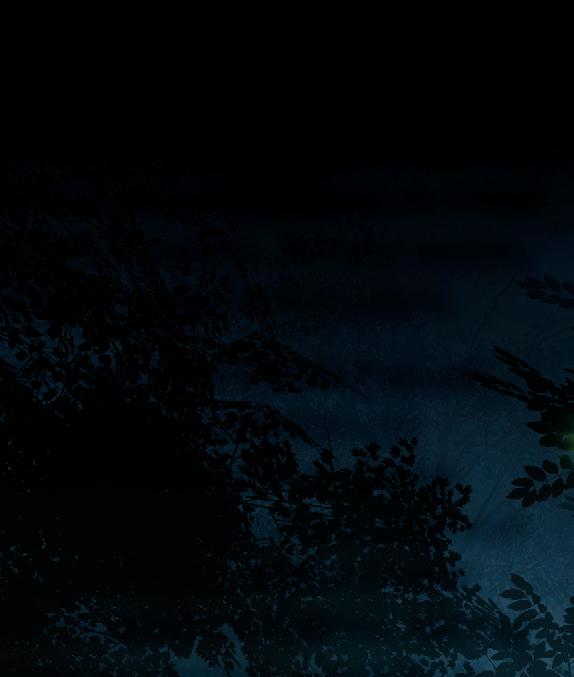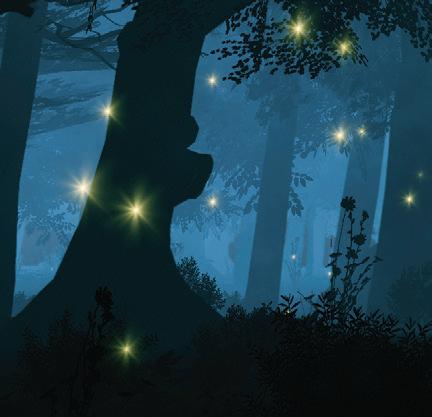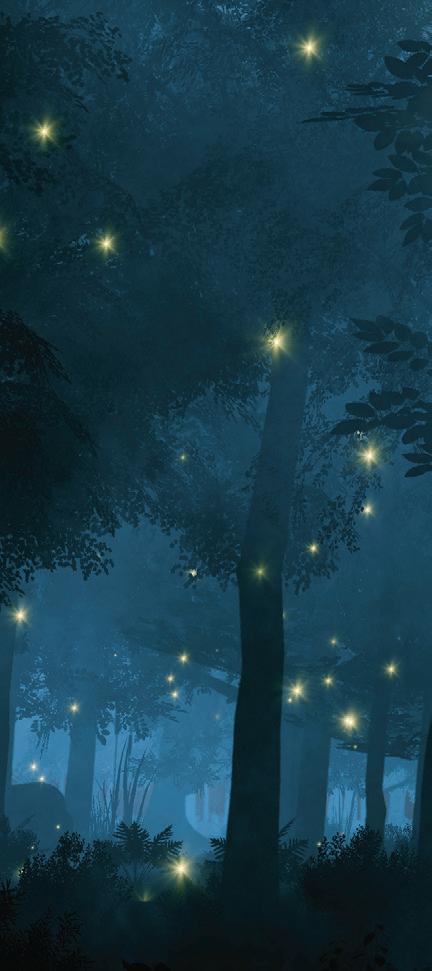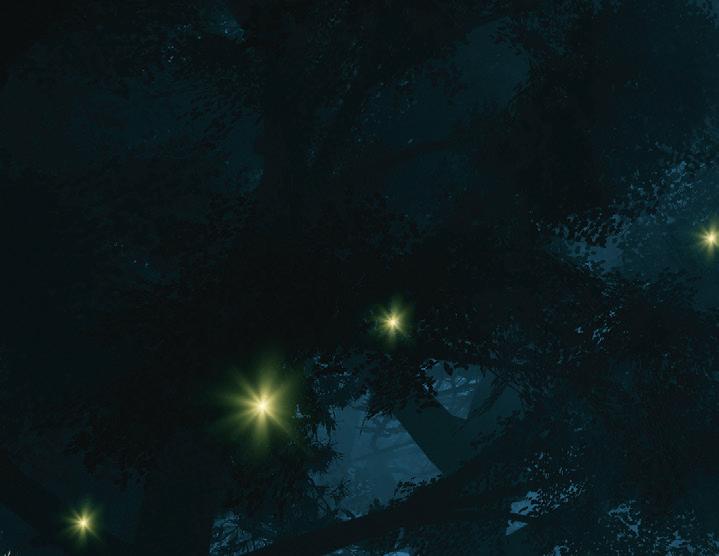
1 minute read
Nature’s
BY CRAIG SPRINGER
It’s the dog days of summer, when the air is close and sultry and the heat oppressive. The nasally drone of insects that go sight unseen comes at you, swarming, rising and falling, lapping like waves that come and go off a lake shore.
If summer sound had colors, they’d be matte — flat, like the noir filter on a smartphone camera, near featureless.













But that belies what nightfall brings. Sirius, the dog star, rises into view near the sun this time of year — a harbinger of the sweltering warmth sure to follow for several weeks. This also marks another illuminating event: the rise of fireflies.













More than 2,400 species of fireflies exist around the globe, including about two dozen that make a home in Ohio. Fireflies, or lightning bugs as some people call them, are not flies at all, but beetles characterized by heavily armored shells over wings.
When they take to the wing, they move about as though they carry a heavy load; speed through the air is not a defense mechanism. Heck, they advertise their whereabouts, from just above the grass to chesthigh to weaving through the treetops, for any wouldbe predator to swoop in and make them a snack.
The height where they fly may very well distinguish one species from another to the discerning eye. No matter the species’ name, they all have similar missions when their hindmost is lit: to find a mate and thereby create more fireflies. (The exception is the femme fatale in the Photuris genus of fireflies, among which the females use light for another purpose: to attract males of another genus and make a meal of the amorous suitors. Nature is fascinating — and brutal.)
Typically, it’s the male firefly that blinks to females that rest on the ground or among the boles of trees or in shrubbery. Some populations of fireflies turn the affair into a disco — synchronously flashing en masse,













